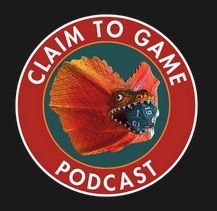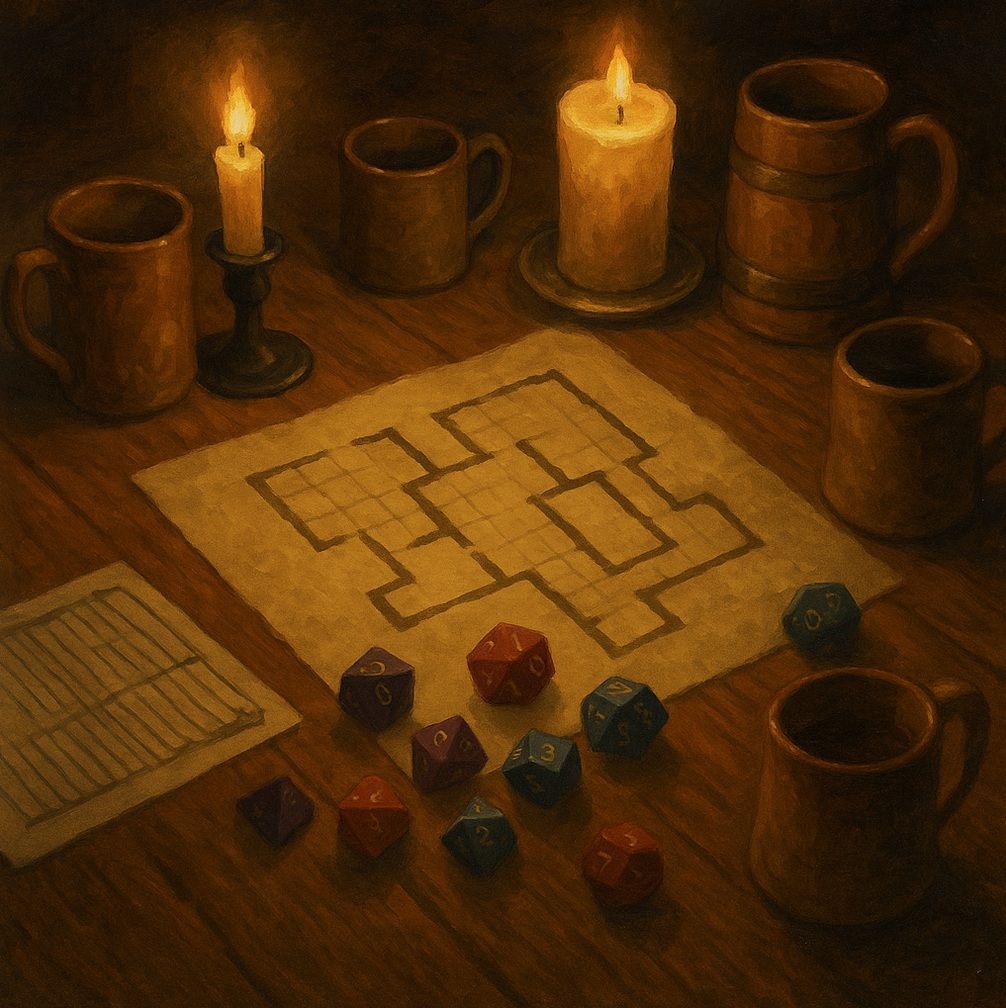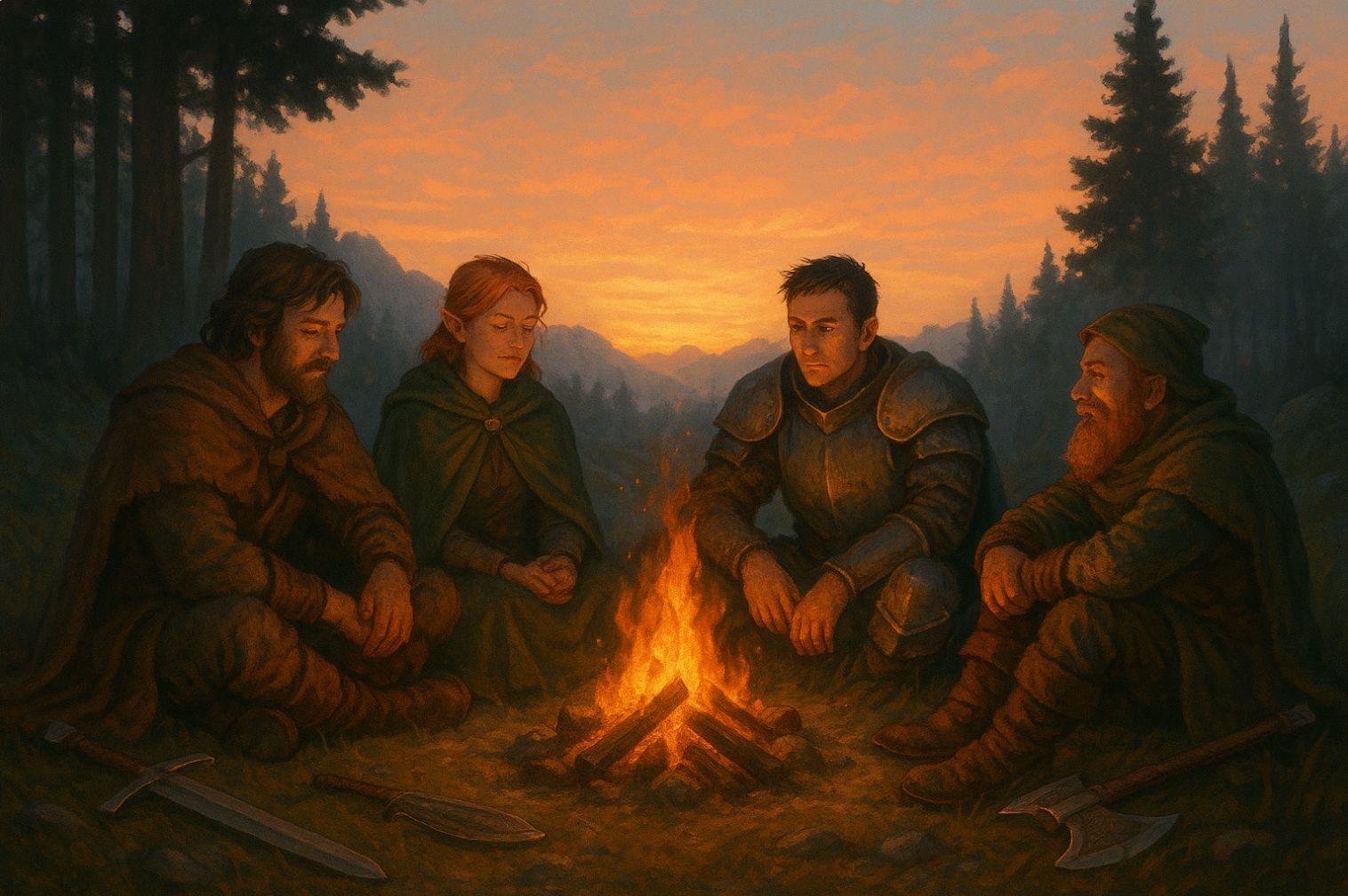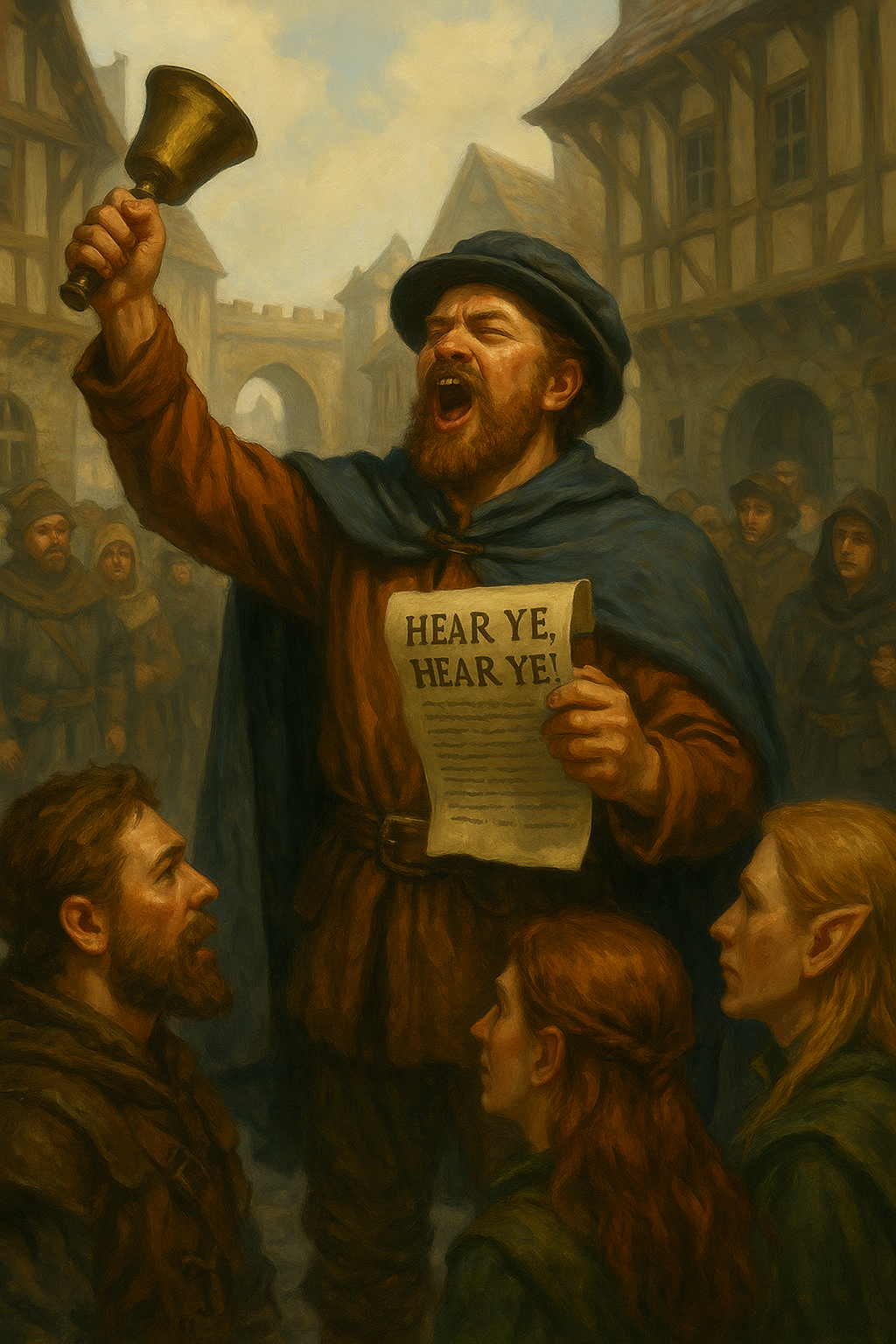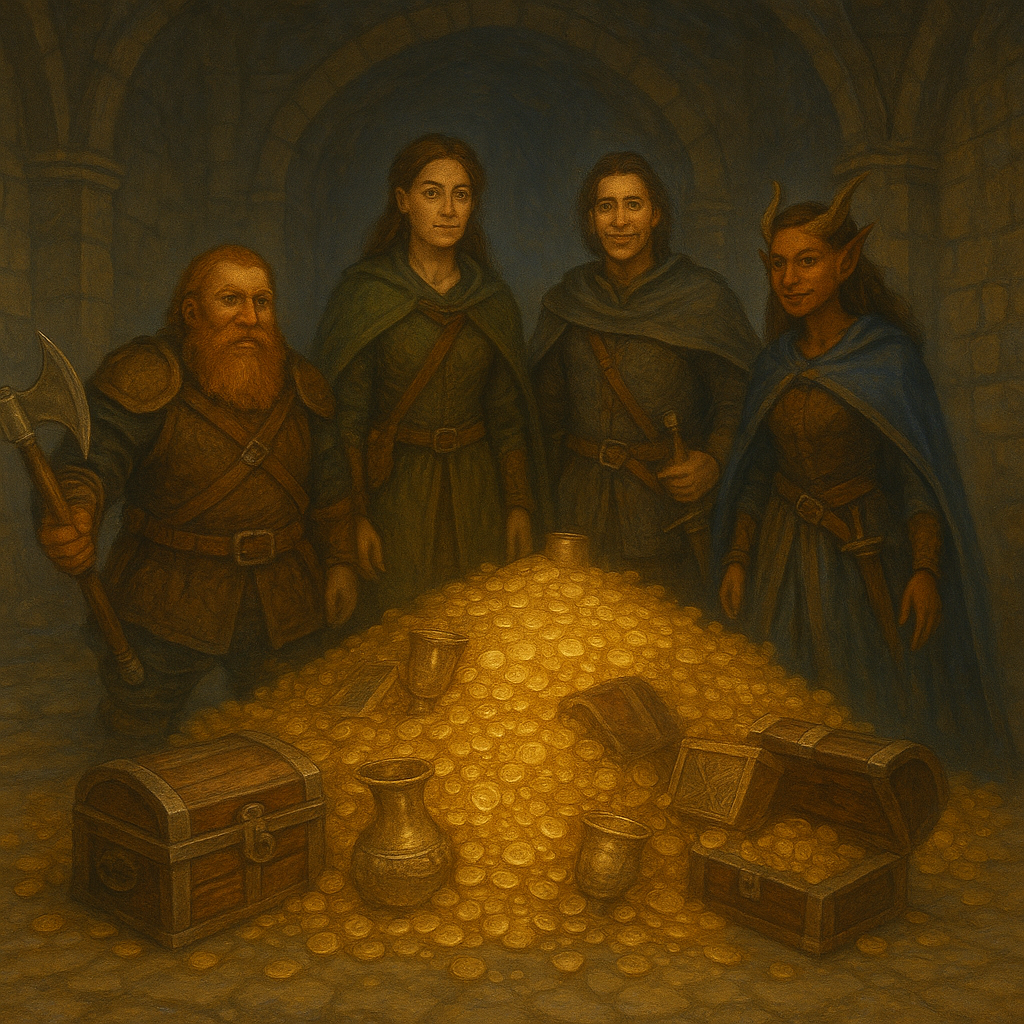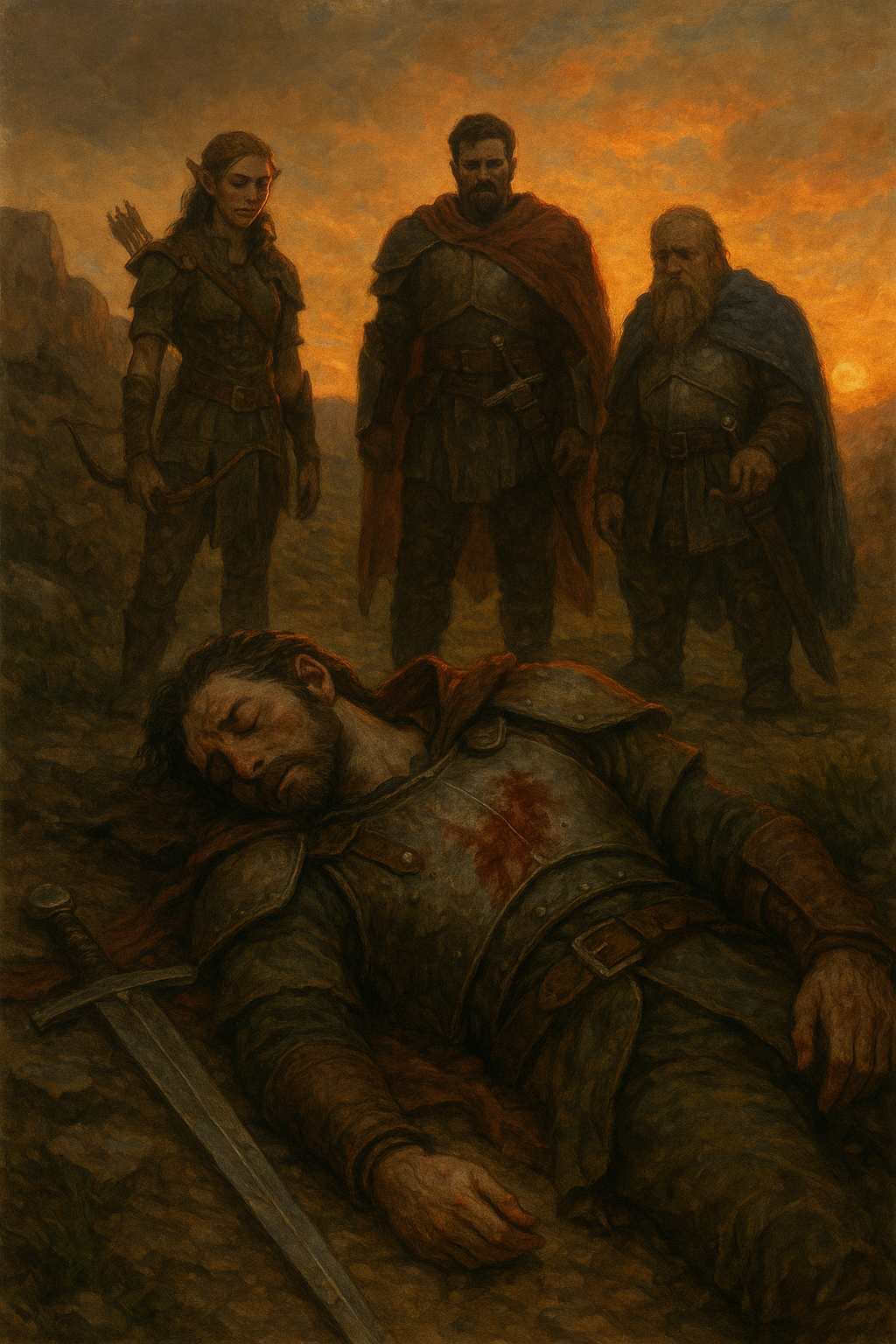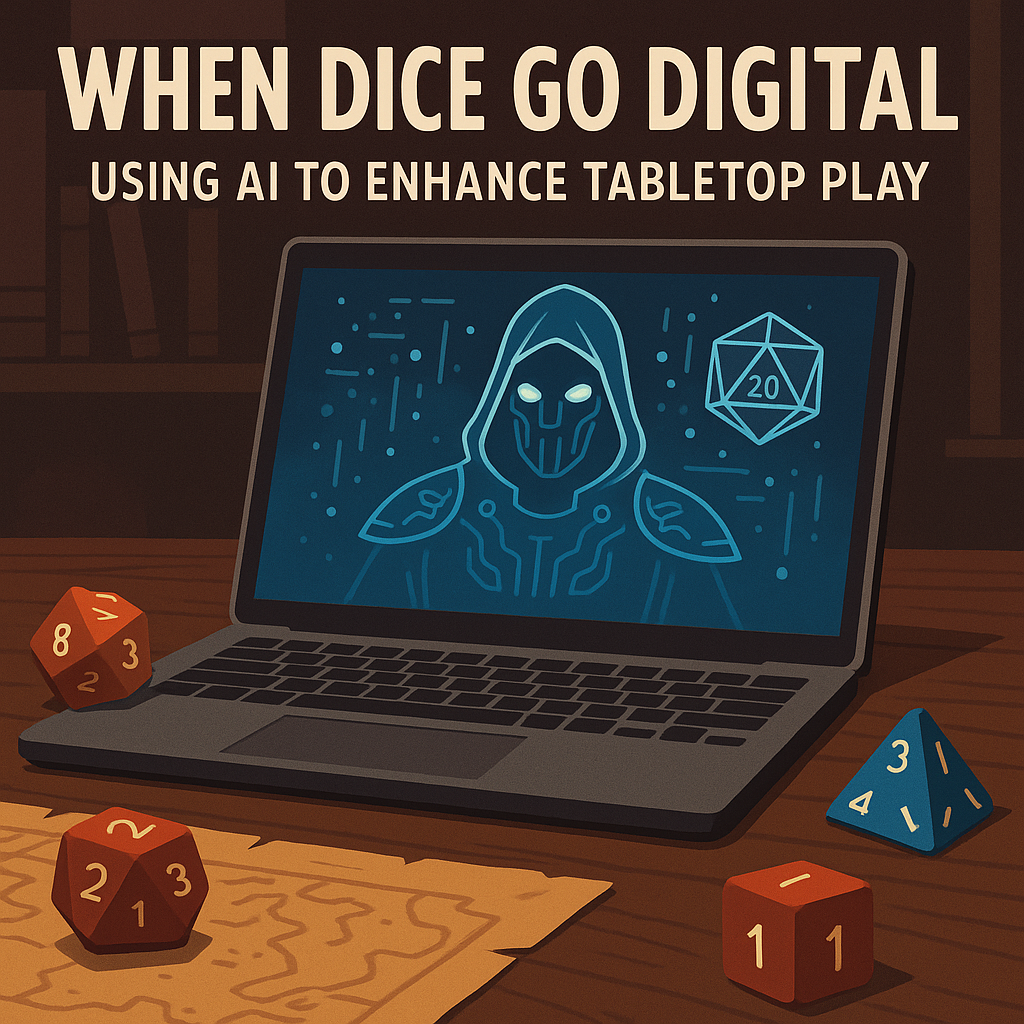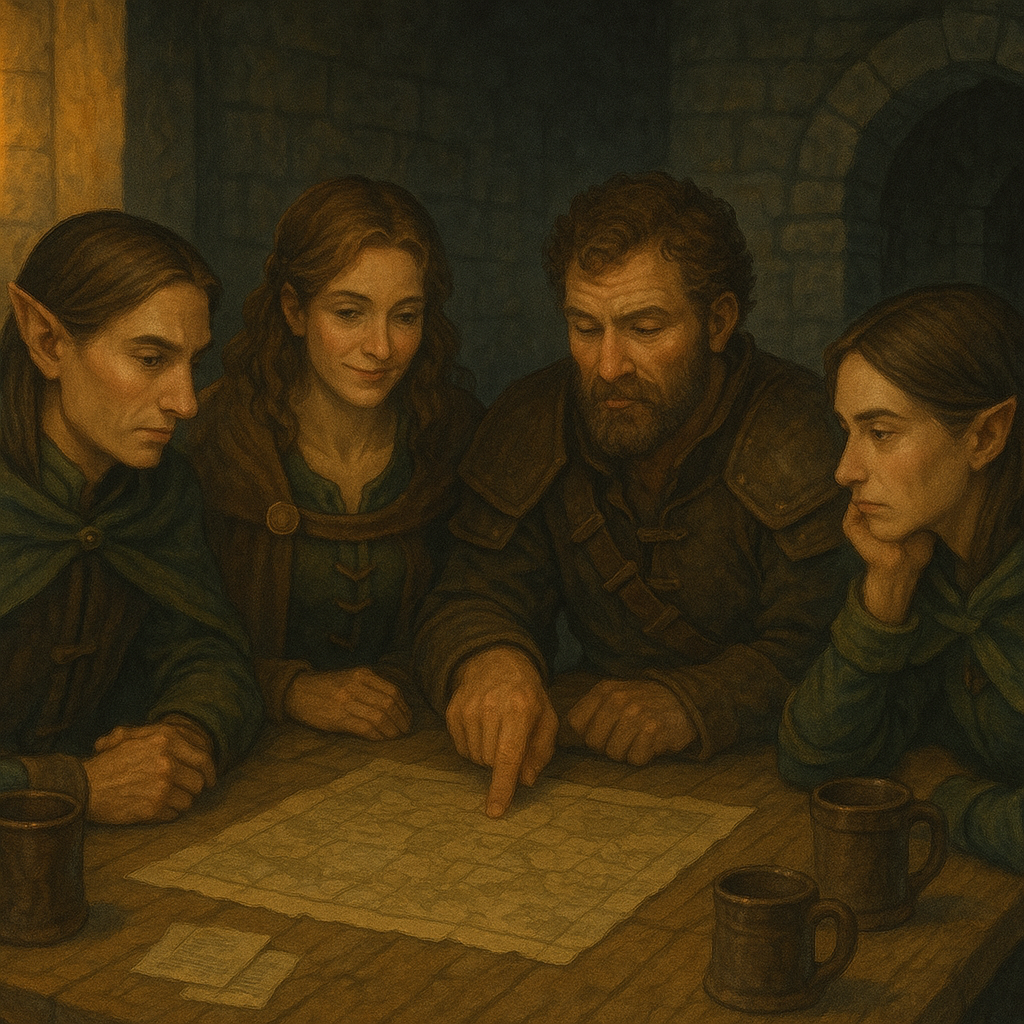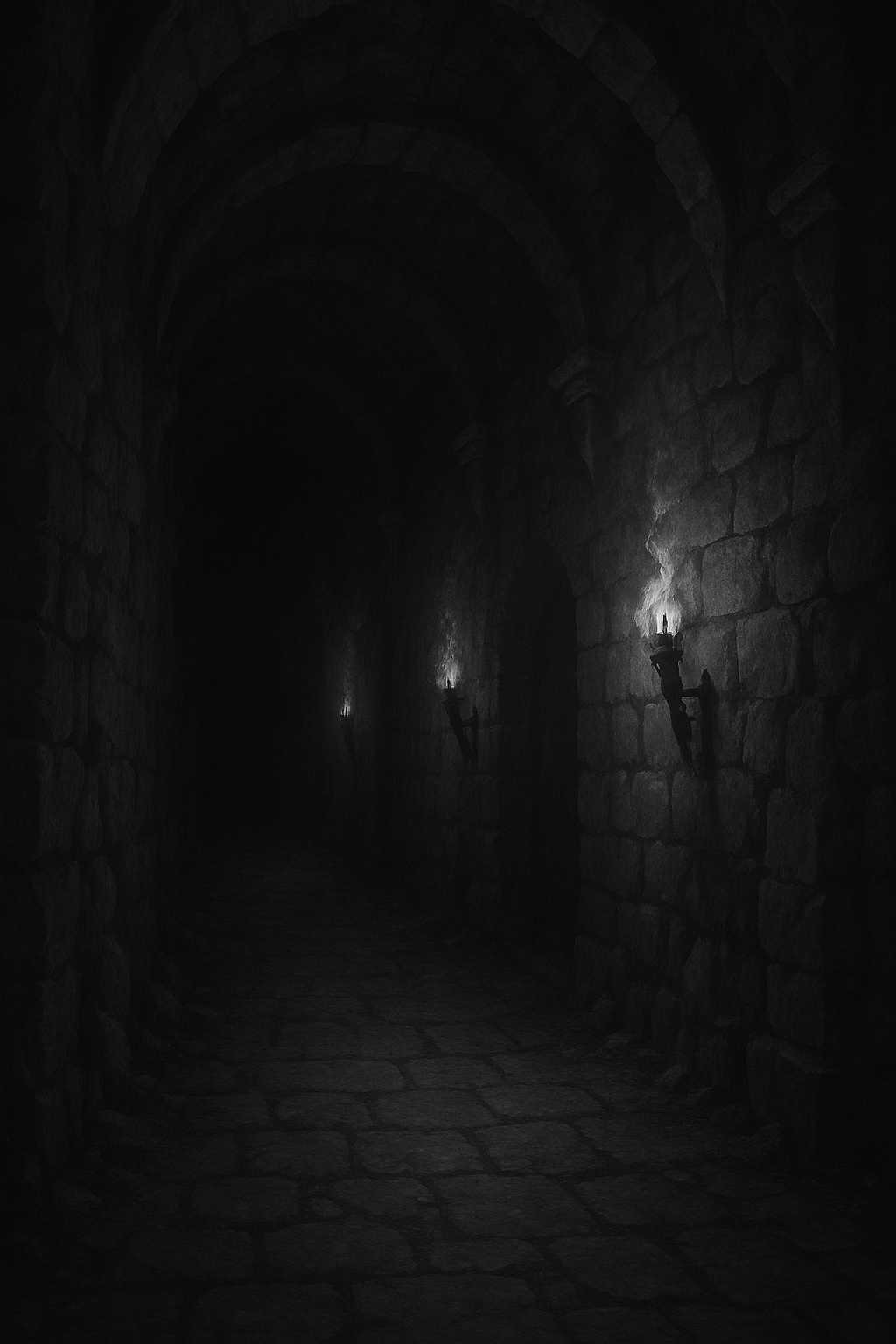Session Zero for One-Shots: Why It Matters and How to Do It Fast
Session 0 isn't just for campaigns!
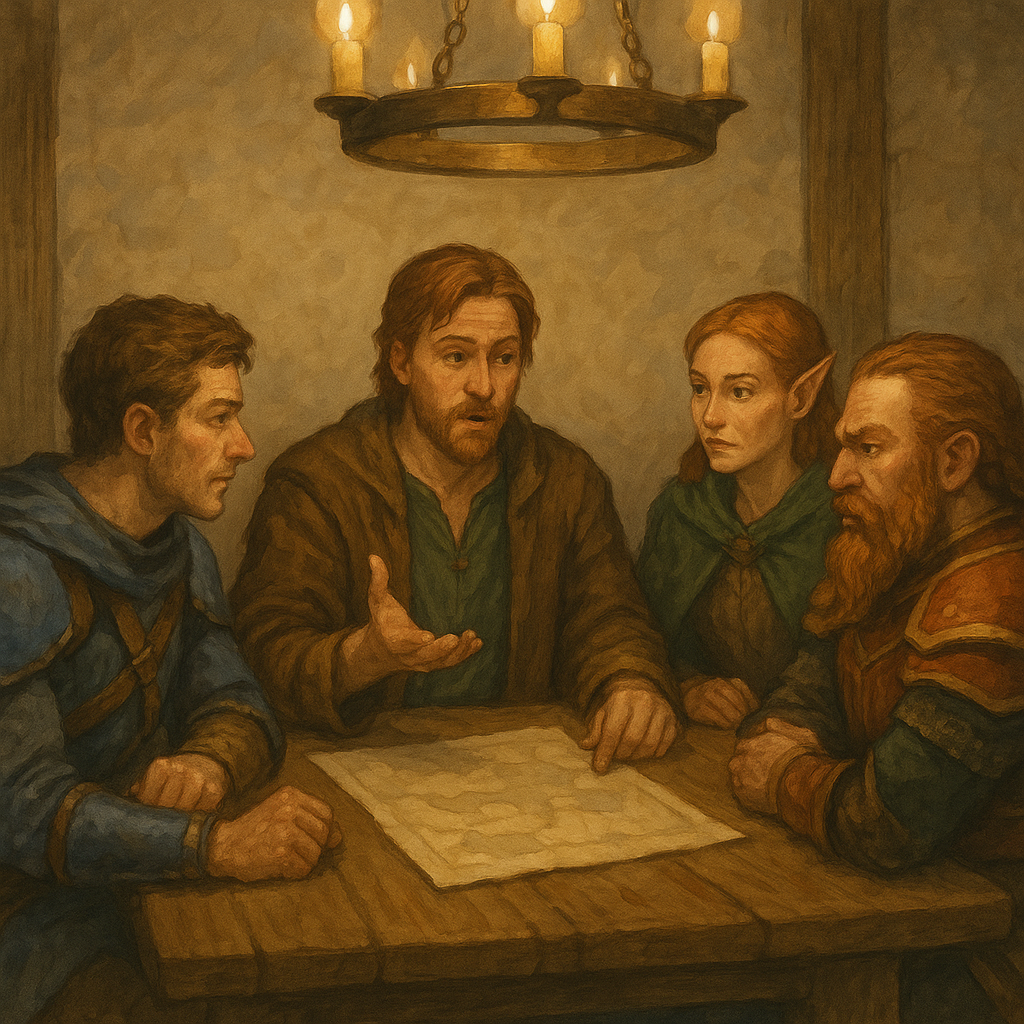
Dear Readers,
One-shots are supposed to be quick. They’re the RPG equivalent of a short story — a tightly contained adventure, often played in a single sitting. With limited time, many Dungeon Masters skip straight to the action. Why waste an hour on a session zero when you’ve only got four total hours to play?
It’s a tempting shortcut. But the truth is, a well-run session zero for a one-shot can save you time and headaches later. It can improve buy-in, clarify expectations, prevent misunderstandings, and even make the single adventure feel like a rich, fully realized story. The good news? You can do a session zero for a one-shot quickly, efficiently, and with flair.
Today we’ll explore why it matters and how to do it fast. We’ll examine the core elements of a one-shot session zero, how to compress the process without losing its benefits, and how to make players excited about a one-off story even if they’ll never see the characters again.
Why a Session Zero Matters Even for One-Shots
Session zero is not just for campaign play. It’s a structured conversation that helps everyone at the table understand what they’re about to play. In a one-shot, time is your most precious resource. You have only a few hours to set up a hook, build tension, and deliver a payoff. That makes it even more important to get everyone on the same page quickly.
Here’s what can go wrong without a session zero:
- Players arrive with wildly different expectations about tone or genre.
- Characters are mismatched in power, theme, or motivation.
- Someone brings a disruptive playstyle that derails the session.
- Content surprises make players uncomfortable or shut down roleplay.
Even a ten-minute check-in before dice hit the table can prevent these pitfalls. It can also boost excitement. When players know what they’re in for, they engage more deeply.
Framing the One-Shot as a Story Event
Before you start, think of your one-shot as a story event, not just a game night. Tell your players up front what kind of story it is. “This is a gothic horror mystery set in a haunted monastery.” “This is a swashbuckling pirate romp with lots of sword fights.” “This is a political intrigue scenario with very little combat.”
When players understand the premise, they make characters who fit. They also calibrate their expectations about tone. A swashbuckler will crack jokes and swing from chandeliers. A gothic horror investigator will be serious and cautious.
By framing the one-shot clearly, you help players meet you where you are.
Step One: Clarify Tone and Content
This is your first and most crucial step. Tone sets the emotional boundaries. Content sets the safety boundaries.
Tone
Explain the vibe of the adventure in a single paragraph. Is it grim and serious, lighthearted and comedic, darkly humorous, or epic and heroic? Even a few descriptive words help: grim, noir, slapstick, pulpy, political, survivalist.
Content
Quickly check in on sensitive content. Ask if there are any hard lines or topics to avoid. Even in a one-shot, it’s respectful to do a quick safety check. This can be as simple as saying:
“Tonight’s game involves undead and some creepy body horror. Is everyone okay with that? Any topics off-limits?”
This takes two minutes but can make everyone more comfortable.
Step Two: Set Player Expectations About Playstyle
A one-shot can be combat-heavy, roleplay-heavy, puzzle-heavy, or a mix. Tell your players what to expect. Will there be lots of tactical maps or theater of the mind? Will social skills matter more than sword skills?
Setting expectations prevents disappointment. If a player builds a combat monster but the adventure is mostly dialogue, they’ll feel wasted. If they build a diplomat but the adventure is all dungeon crawl, they’ll feel sidelined.
In a one-shot, characters can be laser-focused for the scenario. Give players a chance to aim.
Step Three: Build Characters Together
Character creation can eat half your session if you let it. For one-shots, the fastest method is pregens. But if your players insist on making their own characters, you can still streamline the process.
Pre-Generated Characters
Create five or six pregenerated characters ahead of time with archetypal roles (fighter, rogue, wizard, cleric, etc.) and some fun quirks. Let players pick and personalize names, appearance, and one or two traits. This takes minutes instead of hours.
Quick Build Guidelines
If they make their own, set level, equipment, and ability score rules in advance. Provide a one-page cheat sheet with the basics. Encourage them to skip backstory and focus on a two-sentence hook.
Party Cohesion
Use your session zero to link the characters. Even in a one-shot, they should know each other or at least have a reason to cooperate. Suggest a shared goal or mission. This prevents awkward introductions and wasted time once play begins.
Step Four: Define Objectives and Stakes
Every good one-shot has a clear objective. Rescue the prince. Stop the ritual. Steal the gem. Solve the murder. State this objective at the start of the session. You can still include twists and surprises, but give them a north star.
Clarify the stakes too. What happens if they fail? What happens if they succeed? This raises tension and gives their actions meaning. In a one-shot, there’s no long-term campaign to develop stakes gradually, so state them up front.
Step Five: Table Logistics and Etiquette
Even for a one-off game, cover the basics of table etiquette. Remind players to respect each other’s spotlight time, avoid interrupting, and keep side chatter minimal. If playing online, check microphones and virtual tabletop settings before you start.
Setting these norms in session zero helps everything flow. It also gives shy players confidence that they’ll have space to speak.
Step Six: Safety Tools in a Flash
You can run a quick version of safety tools like lines and veils or the X-card in under two minutes. Simply ask: “Are there any subjects you don’t want in the game tonight?” and “If something makes you uncomfortable during play, how would you like to signal me?”
This not only makes the table safer but also signals that you value player comfort. In a one-shot, players may be with strangers or at a convention. A quick safety check sets a tone of respect.
Step Seven: Session Zero as a Hype Session
A one-shot’s session zero can double as a hype session. Use evocative language to describe the setting. Show an image of the location. Play a snippet of thematic music.
Build anticipation.
This primes the players’ imaginations and makes them eager to dive in. It also helps you establish the tone without lecturing.
Doing It Fast: A Model 15-Minute Session Zero
Let’s walk through a hypothetical 15-minute session zero for a four-hour one-shot.
Minute 1-3: Tone and Content
Briefly describe the scenario and ask about content lines and veils.
Minute 4-6: Playstyle and Logistics
Explain whether it’s combat-heavy or roleplay-heavy, the level of the characters, and any special rules.
Minute 7-10: Characters
Hand out pregens or finalize quick builds. Establish a shared connection or mission.
Minute 11-13: Objectives and Stakes
State the adventure’s hook and stakes. Encourage players to discuss how their characters feel about the mission.
Minute 14-15: Safety and Hype
Do a final check-in, show a picture, play a music snippet, and set the opening scene.
In fifteen minutes you have done everything you need to align the table and launch straight into play.
Narrative Example: The Haunted Lighthouse
Let’s imagine you’re running a one-shot called “The Haunted Lighthouse.” The party must reach the top of a cursed tower before midnight to stop a spectral beacon from summoning a sea demon.
During your session zero you:
- Tell the players it’s a gothic horror scenario with some body horror.
- Ask about comfort levels and receive two veils: no harm to children, minimal gore.
- Hand out pregens: a sailor fighter, a lighthouse keeper cleric, a bardic scholar, and a rogue smuggler.
- Establish that all four are part of the same ship’s crew forced ashore in a storm.
- Set the objective: reach the top before midnight or a kraken-like demon will rise.
This took ten minutes. By the time play begins, everyone is aligned, characters are ready, and stakes are clear.
Session Zero as World-Building Lite
In a campaign, session zero is often a time for players to help build the world. In a one-shot, you don’t have time for full co-creation, but you can do a quick version.
Ask one or two world-building questions. For example: “What rumor have you heard about the Haunted Lighthouse?” or “What superstition does your ship’s crew believe about ghosts?” These questions give players ownership without bogging down the clock.
Their answers can inspire small details during play. They’ll feel like co-authors rather than passengers.
Integrating Player Goals into a One-Shot
Even in a one-shot, characters can have goals. These goals act as micro-arcs that pay off in a single session. Ask each player for one goal their character wants to achieve by the end of the night.
Examples:
- “I want to prove my bravery to the crew.”
- “I want to find my lost sister’s ghost.”
- “I want to steal the artifact and disappear.”
These goals give you material to work into the adventure. When you pay them off, players feel satisfied and invested.
Pacing Your One-Shot Through Session Zero
A good session zero can actually make your one-shot faster. By clarifying tone, playstyle, and stakes, you reduce table confusion later. Fewer questions mid-game means more time for actual play.
You can also use session zero to foreshadow pacing. Tell your players: “We’re aiming for three acts. We’ll take a break after Act 2. If we’re running behind we may compress Act 3.” This sets expectations and keeps everyone on track.
Using Visual Aids
Show don’t tell applies to session zero too. If you have maps, handouts, or art, show them briefly at the start. A single image can communicate tone and setting faster than a speech.
For example, show an eerie lighthouse sketch to set gothic horror. Show a bustling cityscape for urban intrigue. Show a vibrant jungle for a pulp adventure. These images anchor the players’ imaginations.
Handling Mixed Experience Levels
At many tables, one-shots attract mixed groups. Some players are veterans. Others are brand new. Use session zero to level the playing field.
Quickly explain the basics to newcomers. Ask veterans to help or be patient. Clarify that rules questions are welcome. This two-minute courtesy reduces stress and helps everyone enjoy the game.
Session Zero as Social Contract
A one-shot may be your only game with these players. Session zero is your chance to establish a social contract. This includes not just safety and etiquette but also your style as a DM.
If you narrate in first person, say so. If you roll in the open or behind a screen, say so. If you fudge dice to keep things cinematic, say so. Transparency builds trust and allows players to adapt their expectations.
Compressing Backstories into Hooks
In a campaign, characters can have elaborate backstories. In a one-shot, backstories need to be simple but evocative. During session zero, encourage players to write one sentence about their past and one sentence about their current motivation.
For example: “Former lighthouse keeper now seeking redemption for past cowardice.” “Ambitious bard seeking inspiration for a new song.” “Rogue smuggler hiding from a bounty.”
These micro-backstories give you hooks to pull during play.
Making Safety Feel Natural
Some DMs fear safety tools will feel clinical or awkward. But you can weave them into the narrative. For example, say: “Before we set sail, is there any superstition or taboo your character won’t break?” Players will name their lines and veils in-character.
This blends session zero with roleplay and makes safety feel organic.
Session Zero as a Mini-Prologue
If time permits, end your session zero with a mini-prologue scene. This can be a quick skill check, a flashback, or a shared dream. It serves as a warm-up and can introduce key themes.
For example, before the Haunted Lighthouse adventure, run a flashback of the crew at sea sharing rumors of the cursed beacon. This gets them in character and foreshadows the stakes. It also feels like part of the story rather than setup.
Avoiding the Trap of Over-Explaining
The biggest risk of a one-shot session zero is letting it sprawl. If you talk for thirty minutes about tone and rules, you’re eating into game time. Keep your explanations crisp. Aim for one paragraph per topic.
Use your energy to build excitement rather than lecture. Ask questions rather than make speeches. The more interactive your session zero, the faster it goes and the more engaged players feel.
Building Player Trust Quickly
In a one-shot, you don’t have months to earn trust. Session zero is your first impression. Be warm, confident, and clear. Show that you respect your players’ time and comfort. They’ll relax and dive in.
This trust also allows you to push boundaries later in the game. If players know you’re attentive and responsive, they’ll embrace tension and drama rather than resist it.
The Secret Power of Recaps
Even though it’s a one-shot, do a micro-recap at the end of session zero before starting play. Summarize the tone, the characters, the stakes, and the opening scene. This locks it in.
For example:
“So we’re playing a gothic horror one-shot about reaching the top of the Haunted Lighthouse before midnight. You’re all crewmates of the same ship. You’ve got your characters. You know the stakes. Let’s begin.”
This thirty-second recap acts as a transition into play.
Using Session Zero to Foreshadow Rewards
One-shots can still have rewards beyond XP. In session zero, hint at what characters can gain. Maybe it’s treasure, a powerful ally, or a dramatic escape. Even if there’s no leveling, rewards create anticipation.
You can also foreshadow narrative rewards like closure or revelation. For example, hint that a mystery about a character’s past will be revealed if they survive. This gives emotional stakes.
Session Zero for Different Genres of One-Shot
Different genres call for different emphases.
- Horror: Focus on safety, tone, and pacing. Make sure players understand the type of fear you’re aiming for.
- Comedy: Focus on tone and group chemistry. Encourage improv and light rules.
- Intrigue: Focus on relationships and goals. Give players clear factions and motives.
- Dungeon Crawl: Focus on logistics and time. Clarify movement, light, and traps.
Adjust your session zero priorities to the genre you’re running.
An Extended Example: The Midnight Masquerade
Let’s build a full session zero for a political intrigue one-shot called “The Midnight Masquerade.”
The adventure takes place at a grand masquerade ball in a sprawling palace. The characters must uncover a conspiracy to assassinate a visiting ambassador. They have three hours before midnight to solve the mystery and stop the killer.
During session zero you:
- Describe the tone as “Venetian intrigue with masked nobles, secret passages, and hidden knives.”
- Ask about content lines and veils. A player requests to veil romantic coercion. Another asks for no spiders. You agree.
- Hand out pregens: a disguised guard, a spy courtesan, a bard envoy, and a rogue thief.
- Establish that all four characters are undercover agents working for the same crown.
- Set the objective: unmask and stop the assassin before midnight or war will erupt.
Then you ask each player for a personal goal: “What does your character secretly want from the ball?” One wants to steal the ambassador’s jewel. Another wants to defect to the enemy. Another wants to impress a noble patron.
In fifteen minutes you have a party, a mission, personal stakes, and a clear tone. Play begins with the chime of a clock and the swish of silk gowns.
Session Zero as a Marketing Hook for Your Game
If you’re running a one-shot at a convention or online platform, session zero can double as a marketing hook. Players who have a great time in session zero may sign up for your future games.
Be welcoming and organized. Provide crisp handouts or visuals. Show that you respect their time and creativity. A good session zero is like a movie trailer for your DMing style.
Including a Quick Rule Clarification
In a one-shot, rules disagreements can eat time. Use session zero to clarify any house rules or special mechanics. This prevents mid-game debates.
For example: “We’re using average hit points for monsters tonight.” “Critical failures on skill checks will have narrative consequences but not extra damage.” A few seconds of explanation saves minutes later.
Letting Players Contribute to Scene Framing
A fun trick for one-shots is to let players help frame the opening scene during session zero. Ask: “What does the ballroom look like?” or “What is one eerie detail about the lighthouse?” Each player adds a detail. This invests them immediately and sets a collaborative tone.
The Fast Debrief at the End
Technically not part of session zero, but doing a quick debrief at the end of the one-shot closes the circle. Thank your players, ask what they enjoyed, and invite them to future games. This cements their positive impression.
Common Mistakes to Avoid
- Spending too long on backstory.
- Skipping safety checks entirely.
- Letting one player dominate character creation.
- Failing to clarify tone and stakes.
- Not leaving enough time to actually play.
Avoiding these mistakes will make your one-shot smoother and more memorable.
Bringing It All Together
A session zero for a one-shot is like setting the stage for a play. You only have one performance, so your rehearsal must be swift and effective. By clarifying tone and content, setting expectations, streamlining character creation, defining stakes, and establishing safety and etiquette, you create a strong foundation for the story.
Far from eating up precious playtime, a good session zero saves time in the long run. It prevents confusion, builds excitement, and makes your one-shot feel like a polished, intentional experience rather than a random pick-up game.
Most importantly, it respects your players. It tells them you care about the shared experience of telling a story together.
Until next time, Dear Readers...















